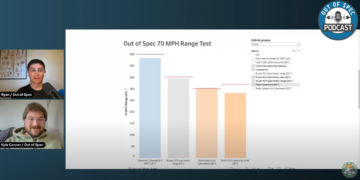Motorcycles sales in Kenya increased yet again in 2020, breaking the trend where sharp declines in registration were observed across the other motor vehicle segments. A 17.4% growth in motor- and auto-cycles was recorded last year, according to the latest Economic Survey from the Kenya National Bureau of Statistics (KNBS).
The decline in registrations in the other vehicle segments could be attributed to the restriction of movement by the government to curb the spread of COVID-19. The lockdowns in 2020 resulted in many people working from home, and hence some families and businesses held back on vehicle purchases.
Motorcycle registrations, however, jumped from 210,103 units in 2019 to 246,705 units in 2020. The number of motorcycles registered in 2020 is more than double the number of motorcycles registered in 2016! The growth of the motorcycle sector over the past 5 years is shown in the list below:
Motorcycle registrations in Kenya over the last 5 years:
- 2016: 119,724
- 2017: 186,434
- 2018: 188,994
- 2019: 210,103
- 2020: 246,705
Source: KNBS 2021 Economic Survey
The motorcycle segment is now Kenya’s largest vehicle segment, as seen from vehicle registrations in the table below:
Source: KNBS 2021 Economic Survey
Essentially, 99% of these 246,705 motorcycles are ICE motorcycles. There is a massive opportunity to electrify this industry, which is why a lot of startups have been running electric motorcycle pilot programs over the last couple of years. These firms are preparing to scale up big time and transform Kenya’s motorcycle sector.
Some of the firms leading the way are:
Motorcycles are mainly used as public transport vehicles in Kenya. These motorcycle taxis are popularly known as boda-bodas. The motorcycle taxi industry is a vital segment of Kenya’s economy. These motorcycle taxi riders enable 22 million rides per day. Average daily earnings for the riders are close to 700 shillings ($6.60). Boda-boda operators collect Sh980 million daily ($9.2 million) and the sector’s annual earnings are estimated at 357 billion shillings ($3.3 billion). Transitioning this sector to electric will also make a huge difference in the pockets of the owners of the bikes as well as the riders. Many of the startups are offering innovative financing arrangements, including models where one can buy the motorcycle and then rent the batteries, reducing the upfront costs. Range anxiety fears are also eliminated by offering battery swap services.
It is also importance to accelerate the adoption of electric motor vehicles in Kenya’s largest vehicle segment to reduce emissions. Kenya’s grid is already very clean. Renewables provided 92.3% of Kenya’s electricity generation in 2020! By gradually increasing the penetration of electric motorcycles in Kenya, significant savings in CO2 emissions can be achieved. This can be achieved by incentivizing purchases of new electric motorbikes, as well as accelerating the conversion of old motorcycles to electric. By building products that reduce the rider’s expenses in terms of maintenance, fueling, and asset acquisition of the motorcycle taxis, for example, these startups will provide a more resilient and sustainable urban mobility solution. Most of the electric motorcycles are assembled locally, providing much needed employment opportunities. Exciting times ahead for Kenya!
Image by Remeredzai Kuhudzai
Appreciate CleanTechnica’s originality? Consider becoming a CleanTechnica Member, Supporter, Technician, or Ambassador — or a patron on Patreon.

Source: https://cleantechnica.com/2021/11/05/motorcycle-registrations-were-up-17-in-kenya-in-2020/
- 2019
- 2020
- 2021
- acquisition
- Adoption
- Advertise
- Anxiety
- asset
- batteries
- battery
- Billion
- Building
- businesses
- buy
- cleantech
- Cleantech Talk
- co2
- co2 emissions
- Conversion
- Costs
- Couple
- COVID-19
- day
- Earnings
- Economic
- economy
- Electric
- electric motor
- electricity
- Emissions
- employment
- expenses
- families
- fears
- Government
- Grid
- Growth
- Guest
- Home
- HTTPS
- huge
- ICE
- Including
- industry
- innovative
- kenya
- latest
- leading
- List
- locally
- lockdowns
- million
- mobility
- motorcycles
- offering
- opportunities
- Opportunity
- Other
- owners
- Patreon
- People
- pilot
- podcast
- Products
- Programs
- public
- purchases
- range
- reduce
- Registration
- Renewables
- Rent
- running
- sales
- Scale
- Screen
- Services
- spread
- Startups
- statistics
- sustainable
- time
- transport
- urban
- us
- vehicle
- Vehicles
- working from home
- year
- years






